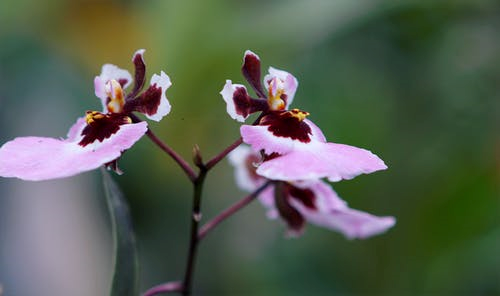
Last time we discussed the treatment sequence for concurrent exterior and interior diseases, which is a general principle.When both exterior and interior diseases are present, the treatment sequence should be determined based on the severity and urgency of the condition.Those with more severe symptoms should be treated first, and those with more urgent symptoms should be prioritized.In cases where the severity and urgency are comparable, it is advisable to first warm the interior and then resolve the exterior, to prevent the pathogenic factors from penetrating deeper and causing a relapse.At the end of the text, Zhang Zhongjing provides formulas for warming the interior and resolving the exterior, namely Si Ni Tang (Four Reverse Decoction) and Gui Zhi Tang (Cinnamon Twig Decoction), which is consistent with the text in the Shang Han Lun (Treatise on Cold Damage).The Jin Kui Yao Lue Xin Dian states: “Diarrhea and abdominal distension indicate cold in the interior. Body pain indicates pathogenic factors in the exterior. Therefore, one must warm the interior before attacking the exterior; this is because if the interior qi is insufficient, the exterior attack will be ineffective, and if the yang qi leaks out, the interior cold will increase naturally.” Thus, Si Ni Tang uses Sheng Fu Zi (Prepared Aconite) to combine warming and tonifying, while Gui Zhi has sweet and Bai Shao (White Peony) to both strengthen the interior while dispersing pathogenic factors, demonstrating the precision of Zhang Zhongjing’s methods.Si Ni Tang and Gui Zhi Tang are both familiar formulas, with Gui Zhi Tang being the ancestor of many formulas.The Shang Han Lun Zhu states that Gui Zhi Tang is the crown of Zhang Zhongjing’s formulas, as it nourishes yin and harmonizes yang, regulates the nutritive and defensive qi, and releases the exterior to induce sweating. Gui Zhi is red and penetrates the heart, warming to support yang and disperse cold, sweet to nourish qi and generate blood, and pungent to disperse wind pathogens, assisting the monarch herb to release the heart fluids and induce sweating. Therefore, in cases of cold damage, Gui Zhi Tang does not use Ma Huang (Ephedra), while Ma Huang Tang cannot be without Gui Zhi. This formula consists of pungent and sweet herbs that disperse, with only Bai Shao being slightly sour and bitter, which can nourish yin, restrain blood, and harmonize the nutritive qi, thus allowing for sweating while also stopping sweating. Ancestors said that without sweating, Gui Zhi Tang should not be taken, precisely because Bai Shao can stop sweating. The function of Bai Shao is primarily to stop restlessness; when restlessness stops, sweating also stops, thus if restlessness increases, it can lead to palpitations and anxiety, which relies on it. If Bai Shao is doubled, it becomes a formula for tonifying the center, not for inducing sweating. This formula uses Gui Zhi to induce sweating, while also using Bai Shao to stop sweating. The pungency of Sheng Jiang (Fresh Ginger) assists Gui Zhi in releasing the exterior. The sweetness of Da Zao (Jujube) helps Bai Shao to harmonize the interior. The balance of yin and yang, exterior and interior, operates harmoniously, achieving harmony. Gan Cao (Licorice) is sweet and neutral, capable of calming the interior and expelling the exterior, used to harmonize qi and blood, thus harmonizing the exterior and interior, and harmonizing all the herbs. The essence also lies in consuming hot, thin porridge, as the qi of grains fills the interior, preventing external pathogens from re-entering and residual pathogens from lingering. The exquisite use of the formula is such that it induces sweating without causing loss of yang, and stops sweating without causing future problems. Nowadays, when doctors encounter fever, regardless of deficiency or excess, they prohibit grain foods; what knowledge does this reflect of Zhang Zhongjing’s principles, and what are the seven formulas’ exquisite meanings?The introduction of Gui Zhi Tang is detailed in Every Day Learn a Bit of Shang Han Lun, which everyone can refer to.Here, I will add a few medical cases of Gui Zhi Tang to broaden the application of the formula, allowing us to use Gui Zhi Tang more adeptly.

The Application and Research of Classical Formulas includes a case of Gui Zhi Tang treating skin itching.A 26-year-old female patient has suffered from skin itching for half a year, with a sensation of coldness on the skin, like ants crawling, thin white tongue coating, and a floating and slow pulse, indicating an invasion of wind pathogens, disharmony of nutritive and defensive qi, and blood deficiency leading to insufficient nourishment of the skin.The prescription was Gui Zhi Tang plus Dang Gui (Angelica Sinensis): Gui Zhi 9g, Bai Shao 9g, Dang Gui 9g, Sheng Jiang 3 slices, Da Zao 5 pieces, Zhi Gan Cao 3g. The formula was given for 7 doses.Commentary: This case focuses on the Taiyang exterior syndrome, aiming to harmonize the nutritive and defensive qi, using Gui Zhi Tang plus Dang Gui to dispel wind and nourish blood. After taking the medicine, the itching and cold sensation decreased, and after continuing with the original formula for 7 doses, the patient recovered.The Application and Research of Classical Formulas also includes a case of Gui Zhi Tang treating postpartum blood deficiency and spontaneous sweating.A 28-year-old female patient, postpartum, was weak, often sweating spontaneously, afraid of wind, fatigued, and experiencing numbness in her feet when cold, with a floating pulse and white tongue coating. This indicates disharmony of nutritive and defensive qi and blood deficiency. The treatment plan was to use Gui Zhi Tang and Dang Gui Bu Xue Tang (Dang Gui Blood Nourishing Decoction) together.The prescription was Gui Zhi 9g, Bai Shao 9g, Huang Qi (Astragalus) 9g, Dang Gui 9g, Sheng Jiang 3 slices, Da Zao 4 pieces, Zhi Gan Cao 3g. The formula was given for 5 doses.Commentary: This case identifies postpartum blood deficiency and disharmony of nutritive and defensive qi, using Gui Zhi Tang to harmonize the nutritive and defensive qi, while Gui Zhi and Dang Gui work together to warm and unblock the blood vessels. Huang Qi and Dang Gui combined with Bai Shao enhance qi and nourish blood to support the righteous qi, leading to recovery after taking the medicine.

